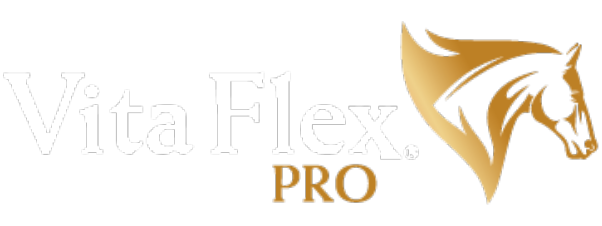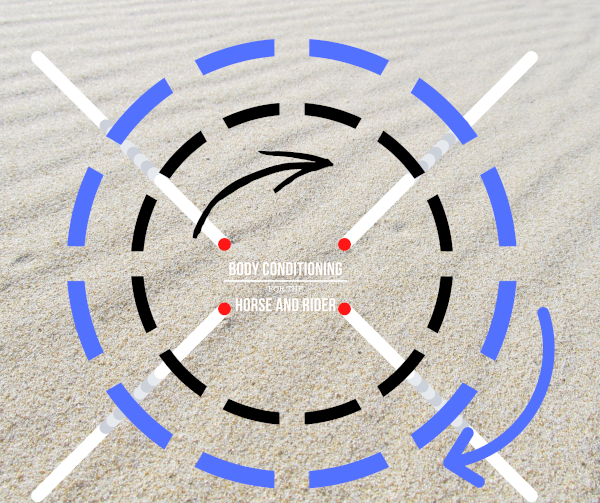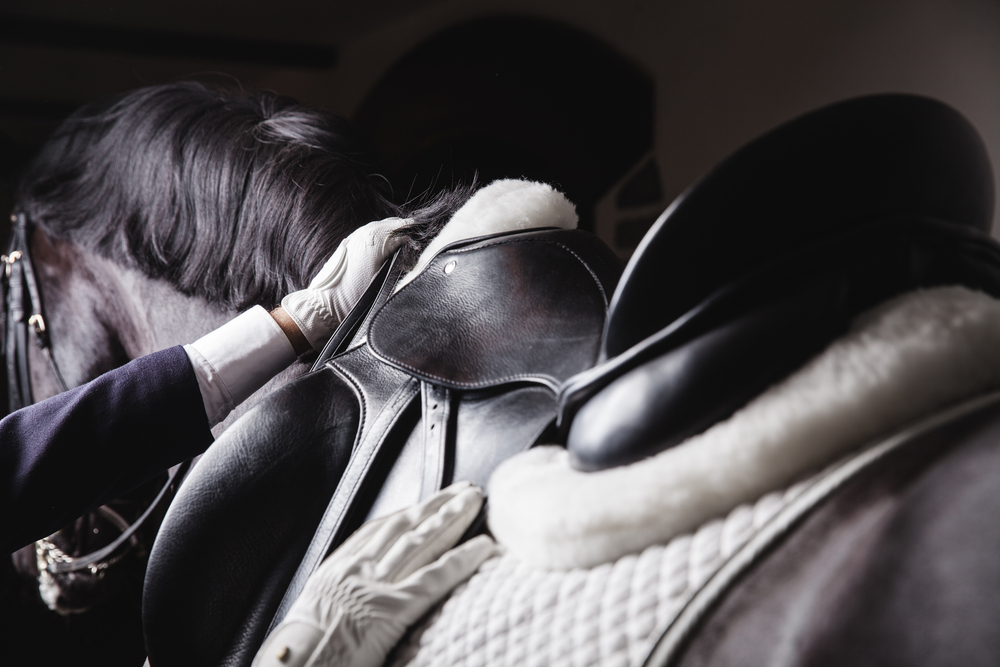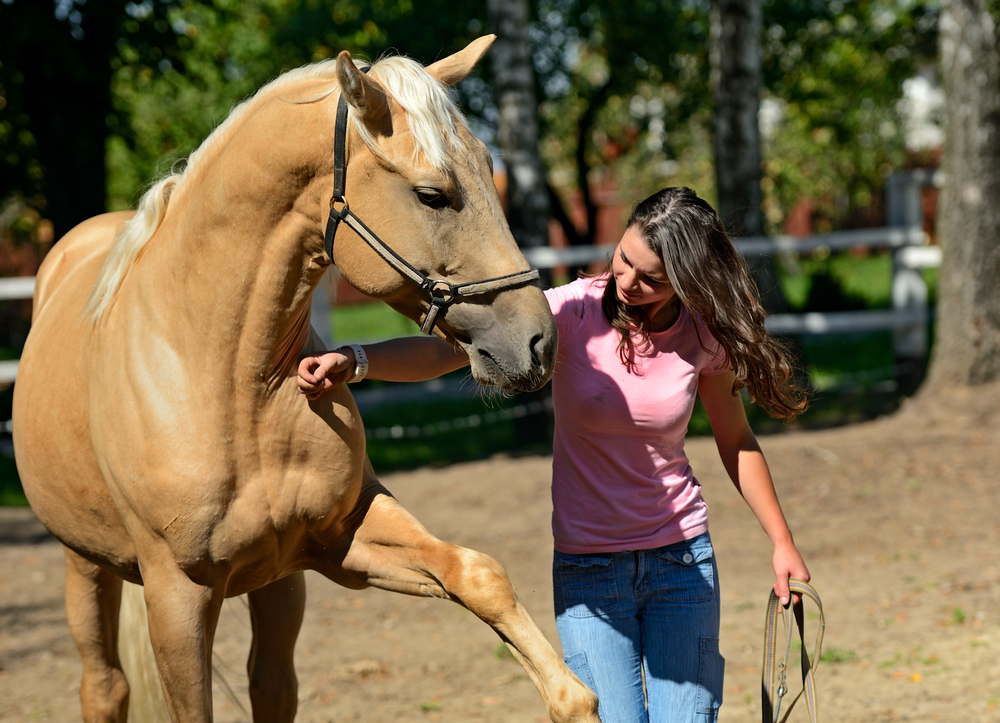Exercises for Correct Horse Body Position
Katie Navarra

Rider position is often the focus of lessons and training. Concentrating on the rider is only half the equation. Horses also need to carry their bodies correctly to give their best performance.
“The horse and rider are a perfect pair and mirror each other,” said Heather Wallace, Certified Equine Sports Massage Therapist (ESMT) and author of “Body Conditioning for the Horse and Rider.” “If the horse is unbalanced and unable to travel straight, the rider will automatically compensate for the horse.”
Looks can be deceiving. A horse and rider look straight, but at the fundamental level, the horse’s muscle and vertebrae may be moving off balance, which over time becomes that horse’s way of going. Exercises focused on the horse vs. those focused on the rider help the horse maintain his symmetry and balance.
Posture for the horse
The correct horse-riding position is when the horse has his head in a neutral head position at the mid-line of the body, Wallace explained. Horses should lift their back and engage their abdominal muscles. They should have a forward extension at the shoulder and push from behind with their hooves pointed as they strike the ground.
Over time, moving in an unbalanced way can lead to problems. One posture problem is a concave curve in the back known as swayback. The other is a pelvic condition called hunter’s bump.
These signs can suggest a horse has poor posture:
- High head carriage.
- Quick short strides.
- Hind-end slipping during downward gait transitions.
- Stumbling or tripping.
- The horse constantly needs to be held in position with the rider’s leg and aids.
Try this at home: Stretches on the ground
Improving the horse’s riding position begins with stretching exercises on the ground. Here are two you can try.
- Pre-ride tail stretches. These stretches encourage the horse to open up and relieve tension throughout their topline, Wallace explained.
Instructions: Stand on one side of your horse’s hindquarters. Hold the tail below the tailbone and slowly pull to you at a 90-degree angle. Repeat on the opposite side. The Equine Clinic at Oakencroft in Ravena, New York explains that some horses prefer a steady pull for 10-30 seconds. Others favor a rhythmic gentle tug.
- Post-ride carrot stretches. “When done correctly carrot stretches encourage the horse to activate their muscles and improve mobility and range of motion while opening up the rib cage and cervical vertebrae on both sides,” Wallace said. “This can increase flexibility and balance.”
Instructions:
Start by getting the horse to reach his chin to his chest. Stand behind the horse’s shoulder. Move your hand with the treat to the inside of the closest leg, encouraging the horse to reach to tuck his chin and reach to his chest for a reward.
For another stretch crouch next to your horse and hold a carrot at his front legs near the fetlock. As he reaches it will stretch his neck and back. Hold for 10 to 20 seconds.
Horses have two sides so repeat stretches to avoid imbalances.
Try this at home: Gait transitions
Working between gaits improves impulsion and self-carriage opens up the shoulders and builds the gluteus and hamstring muscles. When these are strong, there is less likelihood of lameness. Plus, the horse moves more precisely and in balance on his own.
“Think about watching horses in the wild or at play in the paddock. Often a horse will go from standing or walking, straight into the canter. Then they will transition down to the trot,” Wallace said. “Working on the walk to canter transitions considers the natural movements and tendencies of the horse. Cantering loosens up the muscles and joints before trotting, which is a higher impact gait.”
For stiff horses consider cantering before starting trot work.
Instructions:
- Warm-up in a working walk on a long rein for a minimum of 10 minutes allowing your horse to stretch as long and low as they choose.
- Change direction, circle, or serpentine periodically while traveling around the arena. Keep the turns wide while warming up.
- Make contact with the reins and ask for the canter on the long sides of the arena.
- Gently ask for a walk-on approach to the corners. Strive for a gentle downward transition rather than an abrupt halt.
- Repeat walking the corners and cantering the long sides for 10 minutes. Periodically change directions.
- Cool down for 5-10 minutes on a long rein.
Try this at home: Ground poles
Working over ground poles encourages horses to lift their back, engage the abdominals, stretch, and propel themselves forward from their hind end. Wallace recommends using these two drills.
Option 1: Straight line
- Set up four ground poles about four feet apart.
- Warm-up at the walk for 10-15 minutes.
- Pick up a working walk and walk over the ground poles in a straight line and continue around the arena.
- Moving in the same direction, ride a serpentine while asking the horse to flex and bend around and through the poles.
- Trot to increase intensity.
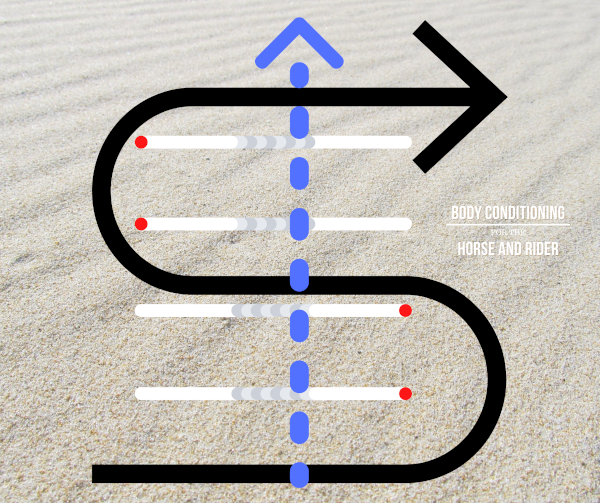
Photo Courtesy of Animal Bodywork and Aromatherapy
Option 2: Circle
- Set up four ground poles about four feet apart.
- Warm-up at the walk for 10-15 minutes.
- At a working walk, move in a bending line over the four ground poles on the outside angle.
- Continue around the arena when complete to straighten and lengthen.
- Moving back in the same direction, ride over the poles in a bending line on the inside track to increase the intensity and shorten the stride. Repeat in both directions at the walk.
- Trot to increase intensity.
Photo Courtesy of Animal Bodywork and Aromatherapy
A stronger ride
Incorporating strength building exercises into your horse’s training program is like focusing on core work for yourself. Strong core muscles improve posture and body carriage, which ultimately enhances performance. Plus, transition and ground pole drills teach patience in gait changes. All of these exercises used together make your job easier—a balanced horse doesn’t need to be “held together” with leg and rein aides.
